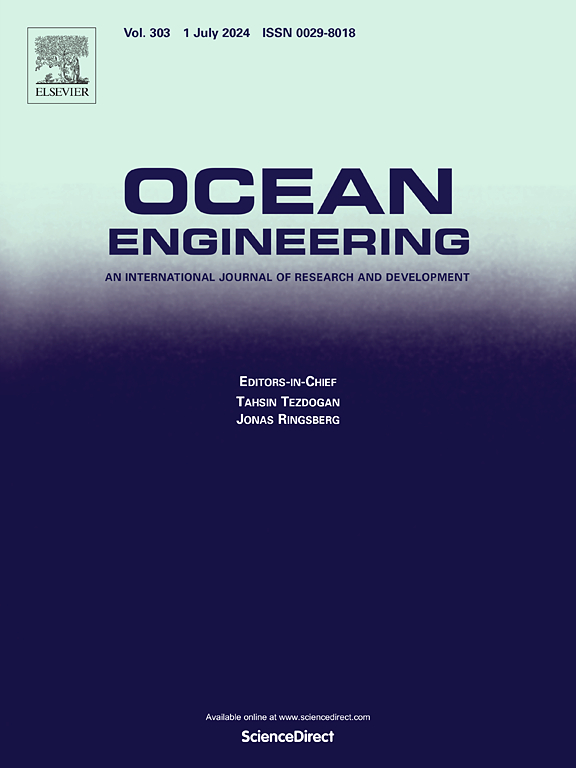Evaluating the role of draghead positioning in dredging performance using 3D CFD, mud sampling, and rheometry
IF 4.6
2区 工程技术
Q1 ENGINEERING, CIVIL
引用次数: 0
Abstract
This paper presents a framework for the modelling of dredging operations, by developing high-fidelity CFD simulations and recognising the highly complex rheology of mud. The goal is to understand the impact of draghead position on the dredging efficiency. The mud sampling procedure is described, followed by a detailed account of the rheometry experiments, rheological modelling, and statistical data reduction methods. In this work mud samples are obtained from 5 different locations for up to 4 different depths in Harwich Harbour in the United Kingdom. Various analyses are performed including analysis of constituents (sand, silt and organic matter) and bulk density. Rheometry tests are performed and after examining the existing empirical models a dual Bingham and Herschel-Bulkley model was chosen which fits the data well and accurately captures the observed mud’s flow behaviour. In addition, the dual Bingham and Herschel-Bulkley model is implemented in the OpenFOAM open-source CFD framework and thoroughly validated by simulating the rheometer cell and comparing the calculated torque directly with the experimental data. Then, large-scale CFD simulations are performed to investigate the flux of different mud layers as a function of the draghead operating depth, employing the dual Bingham and Herschel-Bulkley model. The assessment of various dredging strategies based on draghead depth is presented through analysis of CFD mud layer suction flux data for a stationary draghead. Based on these results, recommendations are made regarding the optimal operating depth relative to different mud layers, considering both economic and environmental factors, including fuel consumption.
利用三维CFD、泥浆取样和流变法评估拖曳头定位在疏浚性能中的作用
本文通过开发高保真的CFD模拟和认识到泥浆高度复杂的流变学,提出了疏浚作业建模的框架。目的是了解拖曳头位置对疏浚效率的影响。描述了泥浆取样过程,随后详细介绍了流变学实验、流变学建模和统计数据简化方法。在这项工作中,泥浆样本从英国哈威奇港的5个不同地点的4个不同深度获得。进行各种分析,包括成分分析(沙子,淤泥和有机物)和体积密度。进行了流变试验,在检查了现有的经验模型后,选择了宾汉姆和赫谢尔-巴尔克利双重模型,该模型与数据拟合良好,并准确地捕捉了观察到的泥浆流动行为。此外,在OpenFOAM开源CFD框架中实现了双Bingham和Herschel-Bulkley模型,并通过模拟流变仪电池,直接将计算扭矩与实验数据进行比较,彻底验证了该模型。然后,采用双Bingham和Herschel-Bulkley模型,进行大规模CFD模拟,研究不同泥浆层的通量随拖头作业深度的变化规律。通过对固定式拖曳头的CFD泥层吸力通量数据的分析,提出了基于拖曳头深度的各种疏浚策略的评价。基于这些结果,在考虑经济和环境因素(包括燃油消耗)的基础上,针对不同泥浆层提出了最佳作业深度建议。
本文章由计算机程序翻译,如有差异,请以英文原文为准。
求助全文
约1分钟内获得全文
求助全文
来源期刊

Ocean Engineering
工程技术-工程:大洋
CiteScore
7.30
自引率
34.00%
发文量
2379
审稿时长
8.1 months
期刊介绍:
Ocean Engineering provides a medium for the publication of original research and development work in the field of ocean engineering. Ocean Engineering seeks papers in the following topics.
 求助内容:
求助内容: 应助结果提醒方式:
应助结果提醒方式:


